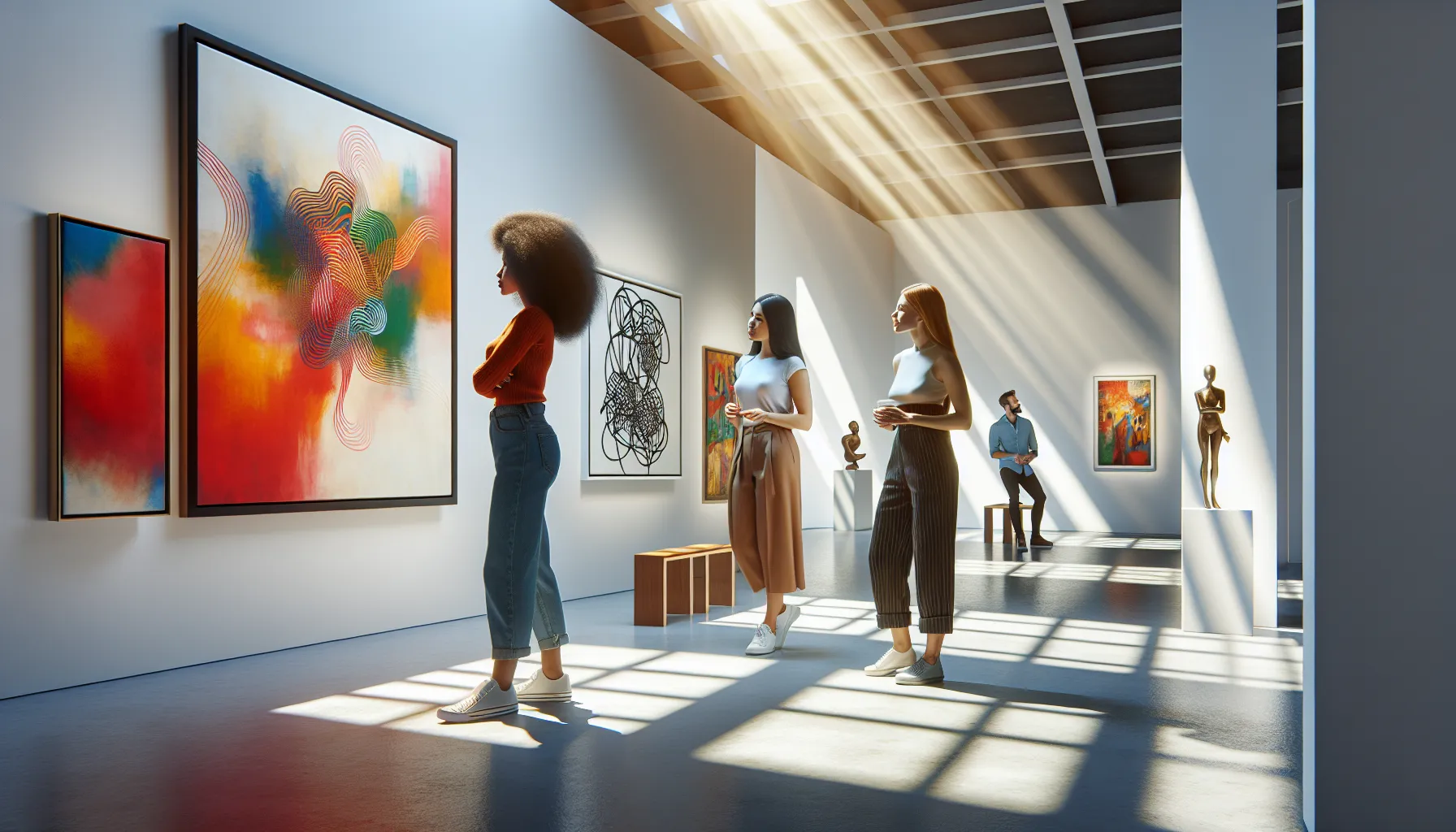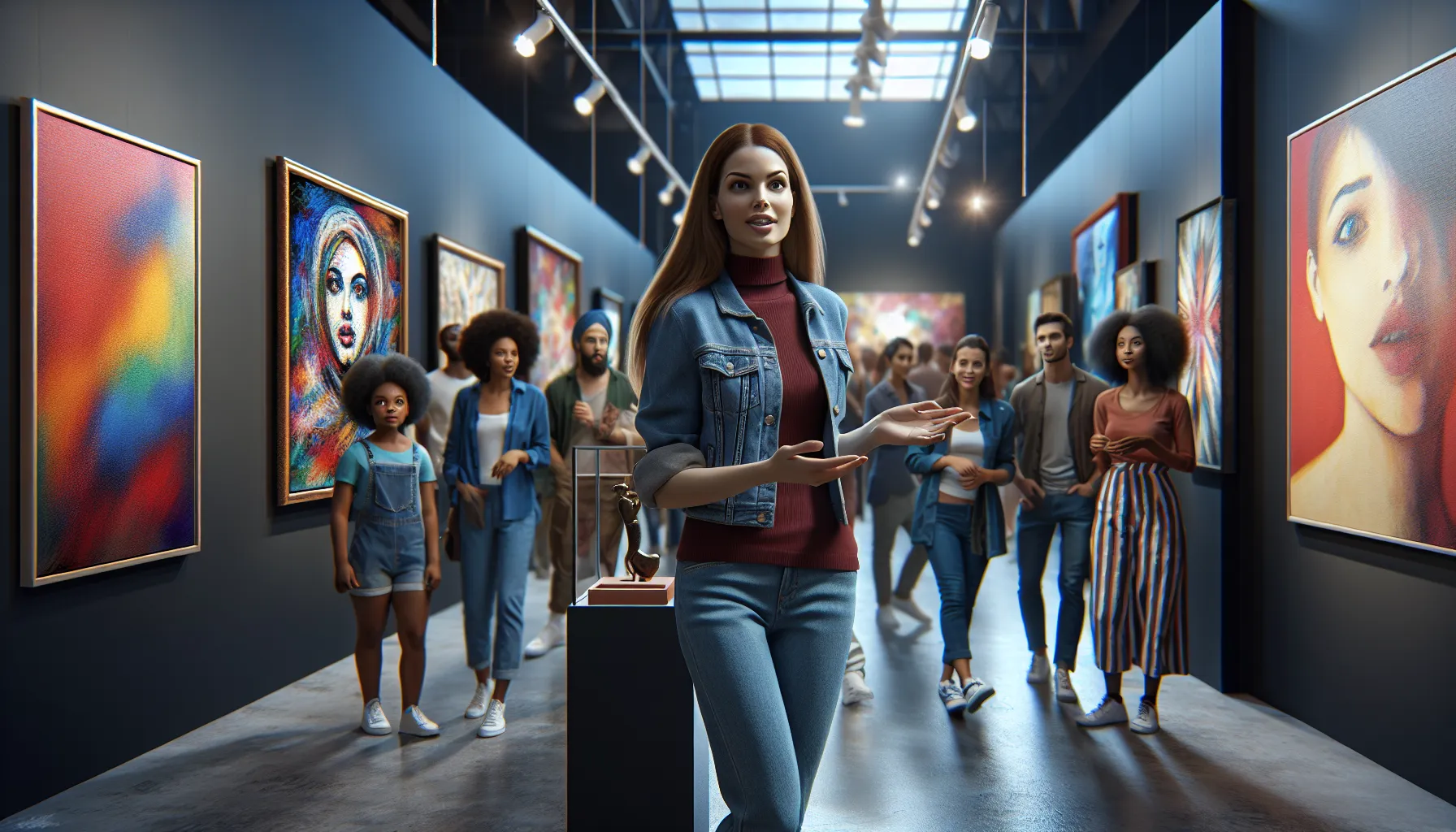Running an art gallery is more than just curating stunning pieces—it’s about connecting with your audience and creating unforgettable experiences. In today’s competitive market, you need innovative marketing strategies to draw attention, engage visitors, and keep them coming back for more. The right approach can transform your gallery into a thriving hub for art lovers and collectors alike.
Whether you’re looking to attract new visitors or deepen relationships with existing patrons, creative marketing ideas can set you apart. From leveraging digital platforms to hosting interactive events, there are countless ways to showcase your gallery’s unique charm. It’s time to captivate your audience and make your art gallery the talk of the town.
Why Marketing Is Crucial For Art Galleries
Effective marketing connects your gallery with a broader audience. It helps you reach individuals who value and invest in art, including collectors, enthusiasts, and emerging buyers. Without a clear marketing strategy, your visibility may remain limited even if your artworks stand out in quality.
Marketing enhances your gallery’s brand identity. A consistent message across platforms builds trust, reinforces credibility, and sets you apart from competitors. By showcasing your gallery’s story and mission, visitors form a deeper connection with the space and artists you represent.
Strong marketing efforts increase event attendance and sales. Showcasing artworks through online campaigns, social media posts, and exhibitions generates interest. Attracting more people to your events often translates to higher purchase rates and long-term partnerships.
Insightful marketing keeps your gallery relevant in a fluctuating market. By adapting to industry trends like virtual galleries and online auctions, you meet evolving expectations and maintain engagement with technology-savvy audiences. This adaptability ensures your gallery remains competitive.
Traditional Marketing Ideas For Art Gallery

Traditional marketing methods remain effective for promoting art galleries. They help create personal connections and enhance the gallery’s reach within local communities.
Hosting Special Exhibitions And Events
Organizing special exhibitions and events can drive foot traffic. Highlight themes, guest artists, or curated collections that resonate with your audience. Consider hosting artist talks or opening night receptions to engage visitors. These occasions create a deeper understanding of featured artworks and foster a sense of exclusivity.
Building Partnerships With Local Businesses
Collaborating with local businesses boosts visibility for your gallery. Partner with coffee shops, bookstores, or boutique hotels to showcase artwork. Co-hosting community events or cross-promotions, such as offering discounts or incentives, encourages mutual growth. Strong collaborations also establish your gallery as an integral part of the local cultural scene.
Effective Use Of Print Advertising
Strategic print advertising enhances reach to target demographics. Advertise in local magazines, newspapers, or cultural event guides to attract nearby art enthusiasts. Use high-quality visuals and concise messages that align with your gallery’s brand identity. Distributing well-designed flyers in relevant areas, like cafes or libraries, further amplifies awareness.
Digital Marketing Strategies For Art Galleries

Digital marketing expands your gallery’s reach, connects with a global audience, and enhances your engagement. Implementing diverse strategies ensures visibility in an increasingly online-focused art space.
Building A Strong Website Presence
A well-optimized website establishes your gallery’s online foundation. Include high-quality images of your exhibitions, artist details, and event schedules. Incorporate intuitive navigation and ensure mobile-friendliness for accessibility. Add a blog to share industry insights, highlight featured works, and improve SEO ranking. Use tools like Google Analytics to monitor visitor behavior and adjust pages for better engagement.
Utilizing Social Media Platforms
Social media boosts your gallery’s visibility and audience interaction. Focus on platforms like Instagram, Facebook, and Pinterest for visually-driven content. Post behind-the-scenes visuals, artist interviews, and virtual tour videos. Use hashtags like #ArtGallery and #ContemporaryArt to improve discoverability. Run targeted ads to reach collectors and enthusiasts in specific demographics. Engage with followers by responding to comments and hosting live Q&A sessions.
Email Marketing Campaigns
Email campaigns nurture relationships with collectors and visitors. Send newsletters with updates on upcoming exhibitions, new artists, and exclusive offers. Segment email lists based on previous interactions to tailor messages. Use compelling subject lines to improve open rates. Incorporate links to RSVP for events or explore online collections. Tools like Mailchimp or Constant Contact help streamline campaigns and track success metrics.
Creative And Unique Marketing Approaches

Implementing distinct marketing strategies can help your art gallery stand out and attract diverse audiences. These methods focus on collaboration, innovation, and unexpected ideas to create memorable experiences and broaden your gallery’s reach.
Collaborating With Influencers And Artists
Partner with influencers and artists to amplify your gallery’s visibility. Leverage influencers with an audience interested in art or culture to showcase your exhibitions on platforms like Instagram and YouTube. Feature local artists through joint events, workshops, or social media takeovers to highlight their work while reinforcing your gallery’s connection to the community. Collaborations like these encourage cross-promotion and attract both loyal and new followers.
Offering Virtual Gallery Tours
Create virtual tours to engage remote audiences and make your exhibitions accessible globally. Use interactive tools like Matterport or 360-degree photography to provide immersive and detailed experiences. Highlight key pieces with detailed commentary or artist insights, ensuring a storytelling element. Promote your virtual tours across your website, email newsletters, and social media to boost participation and accessibility.
Using Guerilla Marketing Techniques
Incorporate guerilla marketing tactics to build intrigue and engagement within your local community. Install temporary art displays in public spaces to generate buzz, or create street art that corresponds with upcoming exhibitions. Run pop-up events in unexpected locations, like cafes or parks, to provide a sneak peek of your gallery’s offerings. These unconventional strategies create memorable experiences and draw attendees back to the main gallery.
Measuring The Success Of Your Marketing Efforts
Evaluate the impact of your marketing strategies to refine your approach and ensure your gallery achieves optimal results.
Tracking Key Performance Metrics
Monitor quantitative data to assess the effectiveness of your marketing campaigns. Measure metrics like website traffic, social media engagement, email open rates, and event attendance. For social media platforms, track follower growth, impressions, and click-through rates to determine which content resonates most. Use tools like Google Analytics to analyze website performance, paying attention to bounce rates, session durations, and source channels. For email marketing, tools like Mailchimp help measure subscriber retention and engagement levels. Review conversion rates to understand how many leads or visitors complete valuable actions, such as purchasing art or registering for events.
Gathering Customer Feedback
Collect qualitative insights directly from your audience to enhance your marketing strategies. Use post-event surveys, website feedback forms, and social media polls to learn about attendees’ experiences and preferences. Keep the questions short and specific to encourage higher response rates. Implement tools like Typeform or Google Forms to organize and analyze responses efficiently. During gallery visits, engage patrons in casual conversations to gather spontaneous feedback. Monitor online reviews on platforms like Yelp and Google to identify trends in audience satisfaction and address concerns promptly.
Conclusion
Running a successful art gallery requires more than just showcasing beautiful artwork. By embracing both traditional and digital marketing strategies, you can create meaningful connections with your audience while staying ahead of industry trends. Focus on building memorable experiences, leveraging innovative tools, and maintaining consistent engagement to position your gallery as a must-visit destination.
Don’t forget to measure your efforts and adapt your approach based on what resonates most with your audience. With creativity, collaboration, and a clear vision, your art gallery can thrive in today’s competitive market.
Frequently Asked Questions
What are the key benefits of innovative marketing for art galleries?
Innovative marketing helps art galleries attract new visitors, strengthen connections with existing patrons, and enhance brand identity. It ensures galleries remain competitive by adopting modern trends like virtual tours and online auctions, while also increasing event attendance and art sales.
Why is digital marketing important for art galleries?
Digital marketing is essential as it expands the gallery’s reach and engages audiences through platforms like Instagram, Facebook, and email campaigns. A well-designed website and visually-driven social media content help boost visibility and connect with collectors and art enthusiasts worldwide.
How can art galleries use social media effectively?
Art galleries can use social media to showcase art collections, promote events, and share behind-the-scenes content. Platforms like Instagram and Pinterest are ideal for visually engaging audiences, while collaborations with influencers or artists can amplify reach and foster community connections.
What are some creative ways art galleries can engage their audience?
Creative ways include hosting interactive events, offering virtual tours, organizing pop-up exhibitions, and partnering with local businesses or influencers. These approaches create unique experiences for visitors and generate excitement about the gallery’s offerings.
How can email marketing benefit art galleries?
Email marketing allows galleries to nurture relationships with collectors and patrons through tailored newsletters. Tools like Mailchimp streamline campaigns, enabling galleries to promote events, share updates, and offer personalized recommendations directly to their audience’s inbox.
Are traditional marketing methods still relevant for art galleries?
Yes, traditional methods like hosting special exhibitions, using print advertising, and forming partnerships with local businesses remain effective. These strategies help drive foot traffic, boost visibility, and establish the gallery as a vital part of the local cultural community.
What tools can art galleries use to measure their marketing success?
Art galleries can use tools like Google Analytics to track website traffic, social media insights to monitor engagement, and email marketing tools to measure campaign performance. Collecting customer feedback through surveys also helps refine strategies for better results.
How can partnerships benefit art galleries?
Collaborating with local businesses, artists, or influencers can increase visibility, create joint promotional opportunities, and attract a broader audience. Partnerships also help position the gallery as a key player in the local arts and cultural scene.
What role does a gallery website play in marketing?
A gallery website serves as a virtual hub showcasing art collections, artist profiles, event schedules, and contact information. It should be visually appealing, mobile-friendly, and search-engine-optimized to attract visitors and provide an excellent user experience.
What is guerilla marketing, and how can art galleries use it?
Guerilla marketing involves unconventional strategies like temporary art displays, street art campaigns, or pop-up events to create buzz and intrigue. These tactics are cost-effective and help galleries capture attention while sparking curiosity within the local community.

Leave a Reply